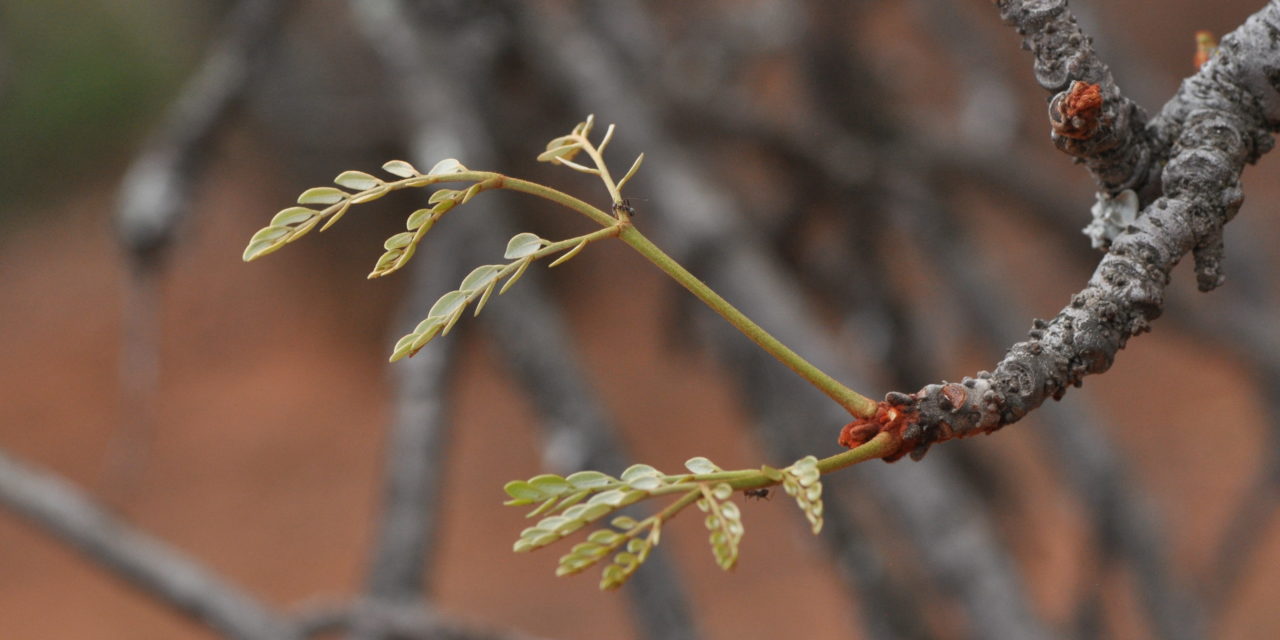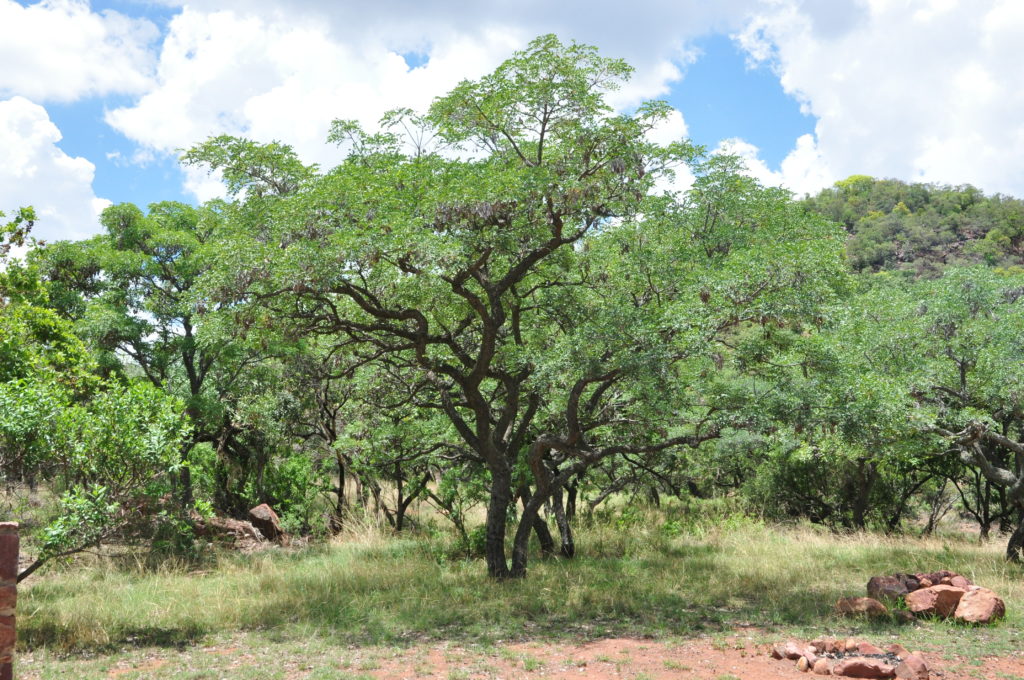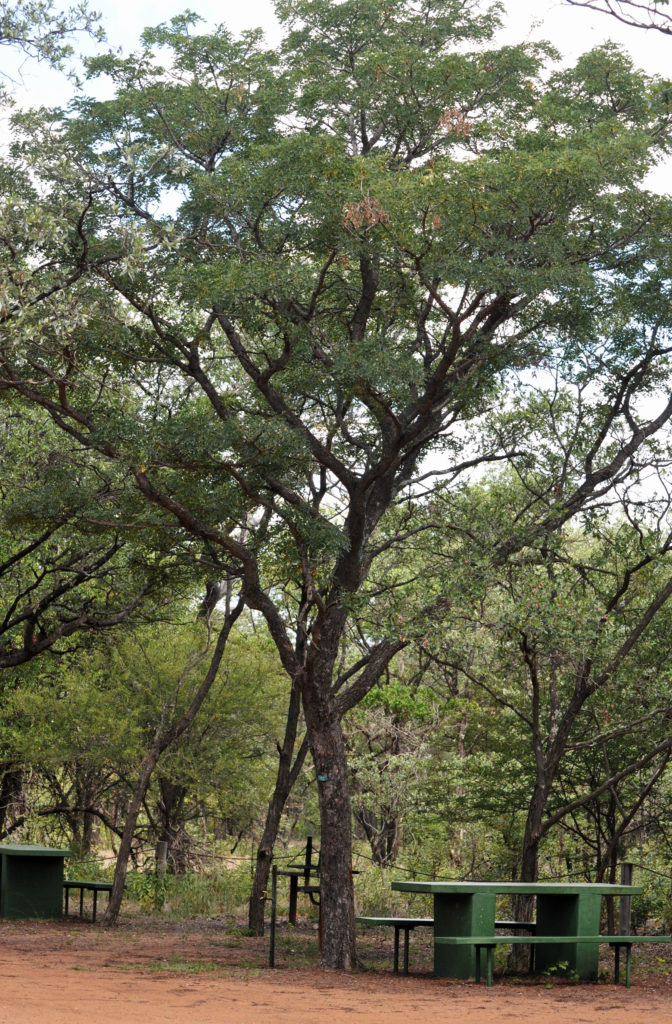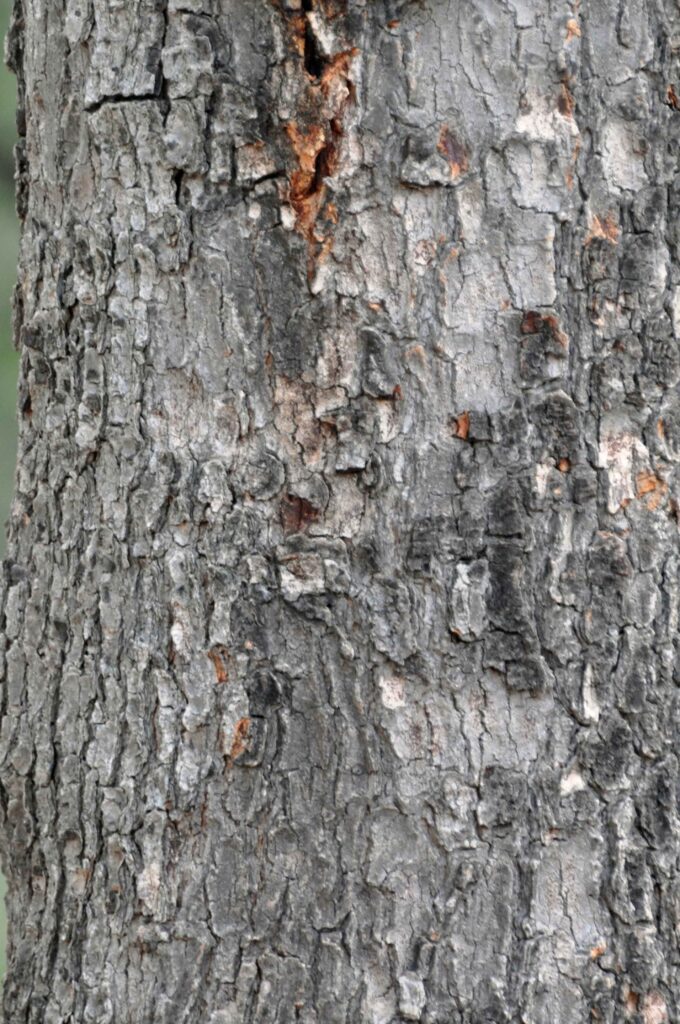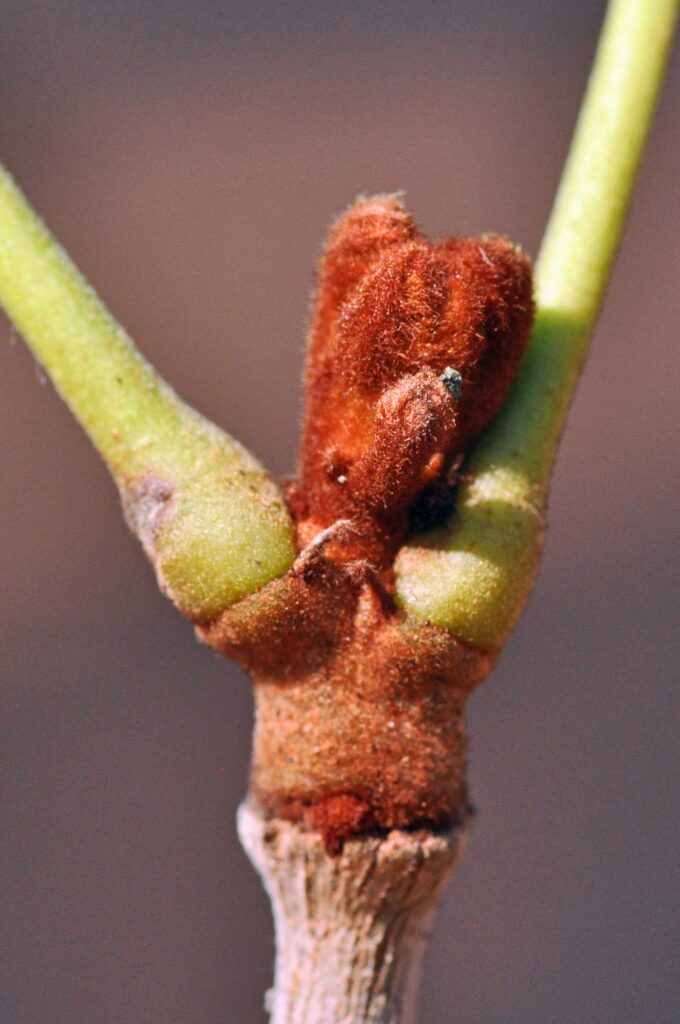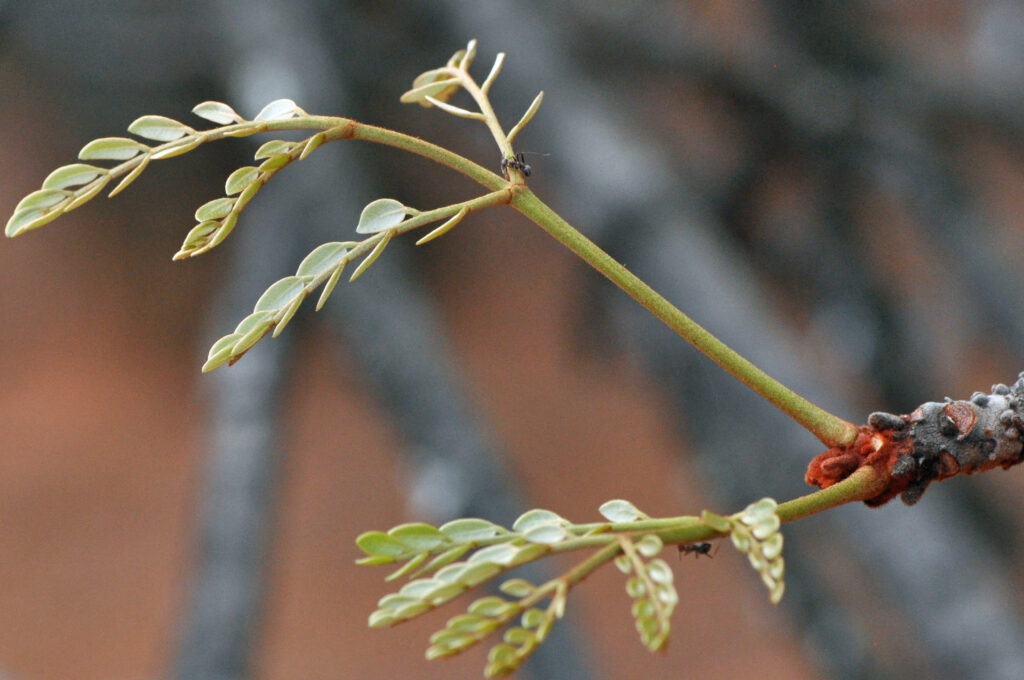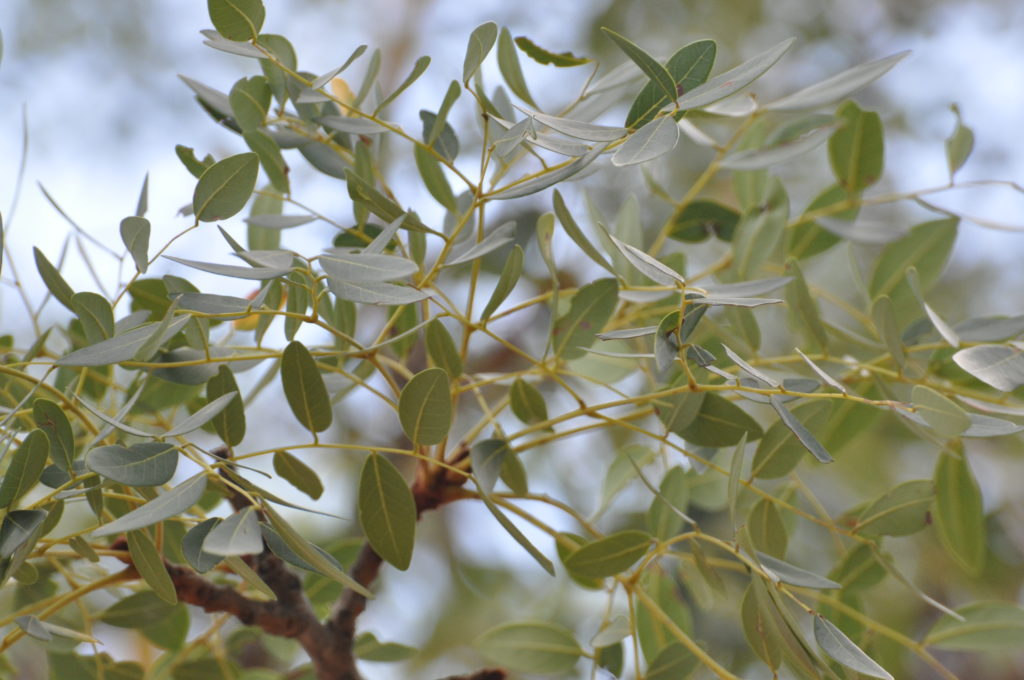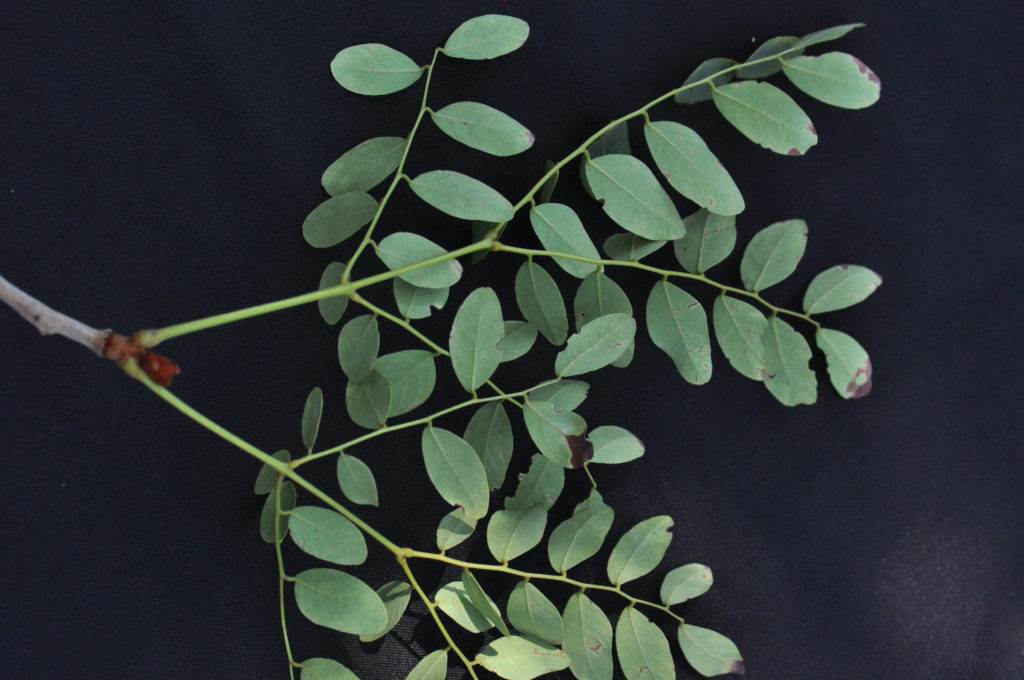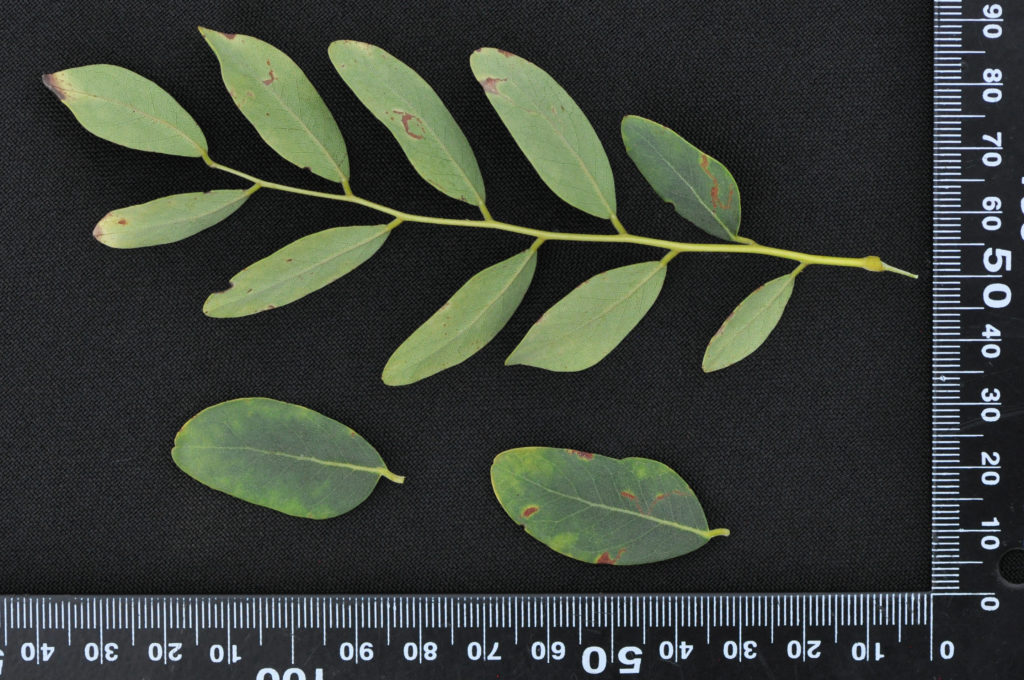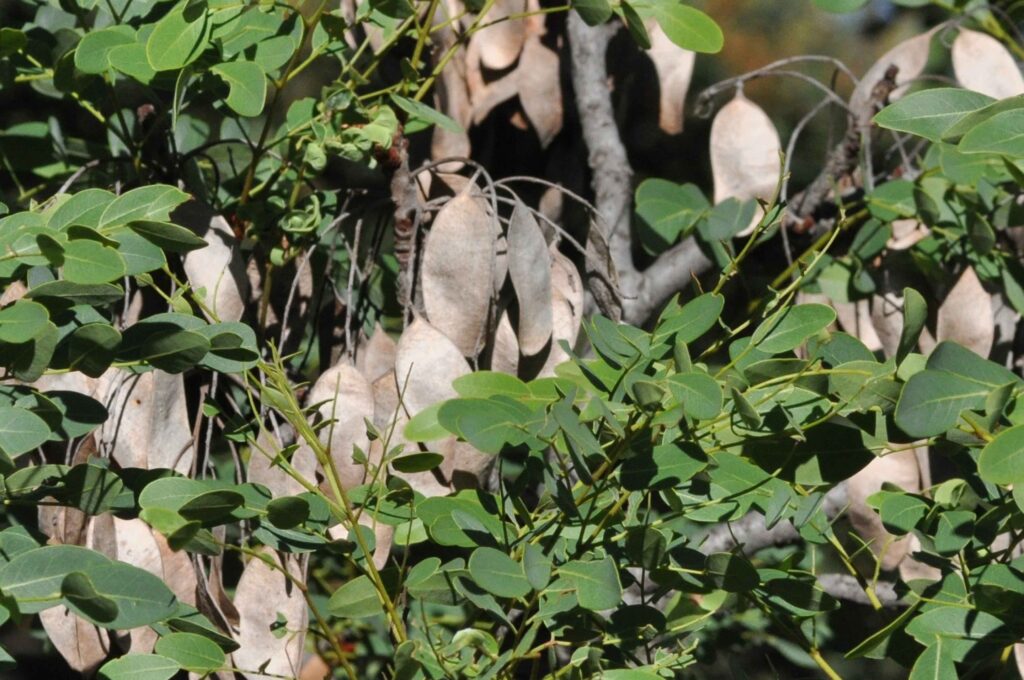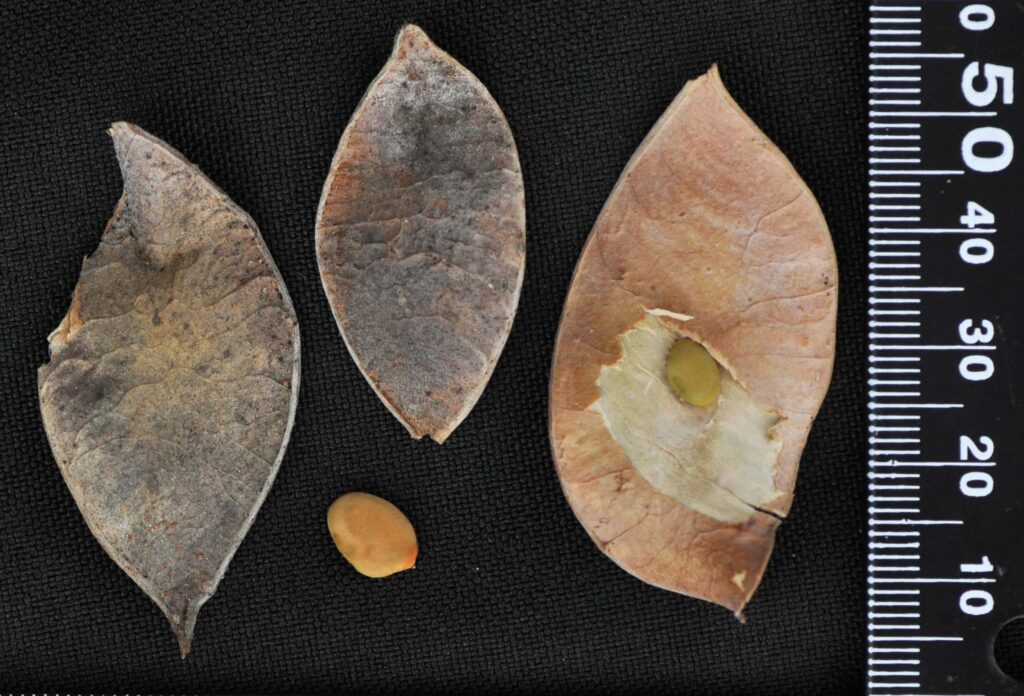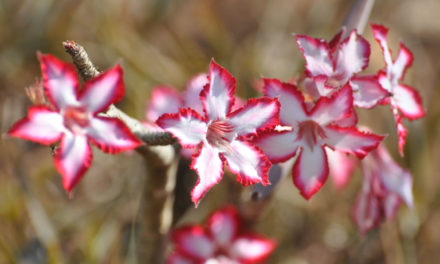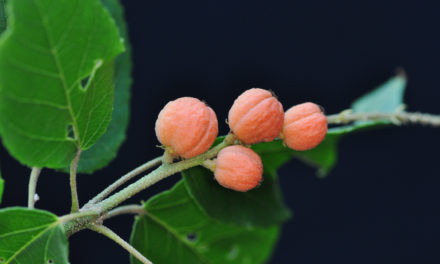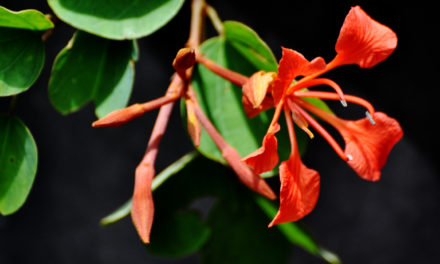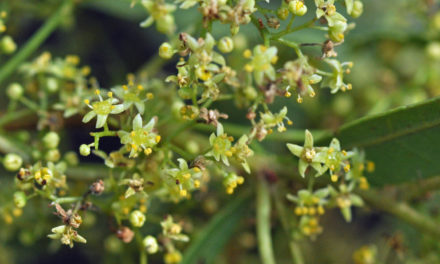Burkea africana
General Info – summary
This unarmed Tree is up 18m high with a trunk up to 80 cm wide. Broad branch ends are rusty red. Bipinnate Leaves end in a single, off-centre leaflet and have elliptic, well-spaced leaflets with an asymmetric base. The whitish, zygomorphic, 5-merous Flowers are in attractive pendulous spikes. 10 stamens are present. The pistil has a superior ovary. Indehiscent Fruit is a thin flattish pod with 1 seed.
Description
Previous Names: Burkea africana var. andongensis, Burkea africana var. cordata.
SA Tree No. 197.
Common names: (Afr) Geelsering, Geel-sering, Geelseringhout, Grootsering, Grootseringboom, Kaffersering, Kafferseringboom, Kleinsering, Kleinseringboom, Rooisering, Rooisering, Rooiseringhout, Sandsering, Sand-sering, Wildesering, Wilde-sering, Wildeseringboom, Witsering, Witseringhout. (Eng) Burkea, Red Seringa, Rhodesian Ash, Rhodesian Seringa, Seringa, Seringa Tree, Syringa Tree, White Seringa, Wild Seringa, Wild Syringa. (IsiNdebele) Umnondo. (Northern Sotho) Monatô, Monoto. (Setswana) Monato, Monatô, Mosêsê, Mosheshe. (Tshivenda) Mufhulu. (Xitsonga) Mkenge, Mpulu
Family: Fabaceae, or Leguminosae (Pea, bean or legume family). After the Orchidaceae and the Asteraceae, the Fabaceae is the third largest Angiosperm (flowering plants) family with 700+ genera and close to 20 000 species. Local Tree genera on this website include Acacia (Vauchellia, Senegalia), Albizia, Bauhinia, Bolusanthus, Burkea, Calpurnia, Colophospermum, Cordyla, Cyclopia, Dichrostachys, Erythrina, Erythrophleum, Faidherbia, Indigofera, Mundulea, Peltophorum, Philenoptera, Piliostigma, Schotia and Xanthocercis. The Fabaceae are recognisable by their fruit and their pinnately compound Leaves. Leaves may also be simple – even bilobed and usually have stipules – some of which may be spinescent. Leaflets are usually entire. Flowers are bisexual and bracteate. Regular flowers usually have 4-5 sepals and the same number of petals. Irregular flowers have 4-5 sepals and 5 or less petals. Stamens have anthers that have 2 pollen sacs and there are usually at least twice the number of stamens as petals – often 10. The superior Ovary has 1 locule containing 1 or more ovules. The Stigma and Style are simple. The single carpel develops into the Fruit, which is usually a pod. The mature pods may dehisce or break into segments. Seeds vary.
Name derivation: Burkea – named after Joseph Burke (1812-1873) a widely travelled plant collector and hunter in South Africa from 1840-1842. His trip is worth reading about – see ref. africana – from Africa. This is the only species of the genus Burkea in Africa.
Conservation: National Status: L C. (Least Concern). Assessed: 2005/06/30. W. Foden & L. Potter.
Tree
This graceful, unarmed, flat-topped or rounded crowned Tree (photo 162) is medium sized and may reach 11m high – even higher further to the north of South Africa. The Trunk may reach a diameter of 80cm. The Bark is rough, dark grey, fissured and is often flaking (photo 159). The inner bark is either pink to dull red or purplish brown. Green lichen (composite organism arising from a mutualistic relationship between fungi and cyanobacteria or algae species) may be present. The ends of young branches are distinctively broad, rusty-red to maroon with densely matted hair (photo 174 & 1053 under Leaves). This is a distinctive feature – especially in winter. Roots can extend horizontally for many metres and are generally shallow.
- 550 2019/11/25 Hope Springs Eternal. Photo: David Becking.
- 162M. 2014/02/17. Marakele NP. Photo: David Becking.
- 159. 2014/02/17. Marakele NP Photo: David Becking.
- 174. 2018/03/14. Pretoria NBG. Photo: David Becking.
Leaves
The grey-green deciduous Leaves are up to 35cm long. They are crowded towards the ends of branchlets (photo 161) and tend to droop. Leaves are bipinnate (Compound: twice pinnate. The central axis or rachis has lateral “branches” not leaflets and the leaflets are on these side pinnae “branches” – photo 175). Each leaf consists of 2-4 pairs of pinnae and each pinna has 4-18 well-spaced, alternate Leaflets (photo 177). Young leaflets have silvery hairs that lie tight against the blade (photo 1053) and become grey-green, blue-green to dark green. These mature leaflets are roughly elliptic, and large – up to 6 x 4cm. The terminal leaflet is not centrally placed (photo 177). Leaflet Veins are difficult to see – unless viewed against a strong light (photo 494). Here lateral veins do not go directly to the margins and loop together closer to the apex. Old leaves are often marked with brown spots. The Apex is rounded or notched (photo 494) and the Base is asymmetric (photo 177). The Margin is entire (with a continuous margin, not in any way indented – photo 494). The broad Petiole (leaf stalk) has a swollen base (photo 174 under Tree) and is up to 10cm long. Petiolules (stalks of leaflets – photo 177) are short. Glands are lacking. In Albizia antunesiana leaflets are opposite not alternate.
- 1053. 2016/10/18. Pretoria NBG. Photo: David Becking.
- 161. 2014/02/17. Marakele NP. Photo: David Becking.
- 175. 2018/03/14. Pretoria NBG. Photo: David Becking.
- 177. 2018/03/14. Pretoria NBG. Photo: David Becking.
- 494. 2019/11/25. Hope Springs Eternal. Photo: David Becking.
Flowers
This Monoecious (the same plant has both male and female reproductive organs) plant has bisexual, 5-merous, creamy-white Flowers that are crowded towards the ends of branches and may appear before (often) or with the new leaves. The flower buds are green-yellow and the open flowers provide a creamy white, mat-like mass. Flowers are small – up to 5mm wide and arranged in long, attractive pendulous Spikes (simple indeterminate inflorescence with sessile flowers on a single unbranched peduncle – stalk of flower cluster). These spikes are up to 24cm long and crowded near the ends of branches. Bracts (modified leaves associated with reproductive structures) are small and persistent until the flowers open.
Individual flowers are zygomorphic (irregular flower: when corolla is divisible into 2 equal halves in one plane only). The Calyx is campanulate (bell shaped) having a short tube with 5 rounded lobes. The lobes are longer than the tube and are valvate (meeting by the edge without overlapping). The 5 free, imbricate (with overlapping edges) Petals are obovate-oblong and up to 5mm long. There are 10 nearly equal Stamens, and each is about 5mm long. The Anthers have a sessile apical gland. A single Pistil (a unit of the Gynoecium, the female element of the flower, composed of the Ovary, Style and Stigma) is present. The superior, partially sunken Ovary is densely hairy. It has a short, thick Style and a funnel-shaped Stigma that is slit down one side. (Sep-Nov).
Fruit
The pale brown, thin, coriaceous (leathery), flattened, elliptic, Fruit is an indehiscent woody Pod that is up to 7 x 3cm and soon becomes hairless. The wing-like pods hang down towards branch ends in large noticeable clusters (photo 505). Although they mature by July, they may remain on the tree for months – even after the leaves have fallen. Each pod usually holds one compressed Seed (photo 679). The tree may only produce fruit every second year.
- 505. 2019/11/25. Hope Springs Eternal. Photo: David Becking.
- 679. 2018/05/29. Pretoria NBG. Photo: David Becking.
Distribution & Ecology
Burkea africana is the only species of this genus confined to Africa. These Trees may grow in deep, sandy soil in the bushveld (a sub-tropical woodland ecoregion of southern Africa). They occur in different woodland types from an altitude of 50m to 1 700m. These indigenous trees grow naturally in Gauteng – common round Pretoria, Limpopo, North West, Mpumalanga, Mozambique (mainly central and north), Northern Namibia, Botswana (often in sandy soils) and northward towards Ethiopia and Nigeria. This plant does best with an annual rainfall from 1 000 to 1 200mm. Its presence is taken by some to indicate “sour” veld (veld that is largely covered with coarse seasonal perennial grasses and affords inferior grazing). It is generally not common in humid, tropical rain forests.
Larvae of the butterfly Hutchinson’s High-flier (Aphnaeus hutchinsoni) feed on this plant. Larvae of the Common Zebra Blue butterfly (Leptotes pirithous) consume the flowers and immature seeds – of a number of other plants as well – including Plumbago and Mundulea. Larvae of the butterfly Apricot Playboy (Deudorix dinochares) feed on the Leaves. Burkea africana is the favourite food plant for the larvae of the moth Cirina forda. Here the larvae may strip the leaves. People in Nigeria consume the larvae. Elephants eat the Branches and leaves, and monkeys eat the Flowers and Pods. Porcupines eat and may damage the Bark. This ecological valuable tree is often associated with other trees including Terminalia sericea, Ochna pulchra, Colophospermum mopane, Pterocarpus angolensis and Combretum imberbe. Although initially susceptible to fires, mature trees tend to recover well after the passage of fire.
Ethnobotany
The dense, hard, attractive Wood is pale yellow to yellowish brown and even a mahogany brown. The sapwood must be treated to prevent borer attack, but the hardwood is borer-proof. The lustrous wood takes a fine polish. It saws easily but has a marked cross-grain, which makes it difficult to plane. It does not shrink much and has good gluing properties. Wagon wheel hubs were made from the wood. Nailing may cause splitting and pre-boring will help overcome this problem. The heartwood is used for fence posts, parquet flooring, railway sleepers, mortars and attractive furniture. The centre of the trunk is often defective. Wood makes an excellent Fuel and the wood of a heated log perfumes the air. Larvae of the moth Cirina forda also provide valuable food for the local people and are boiled, lightly roasted and may also be dried and stored. Dried, crushed tree Bark is toxic and used as a fish poison. Bark and pod extracts are used for tanning. Bark and roots are used in traditional medicine. Trees are slow growing from Seeds and difficult to cultivate. Cuttings are more successful. Roots provide a red dye. Twigs show antimicrobial activity against a wide variety of bacteria and fungi – supporting the use as a chewing-stick for dental care.
References
Coates Palgrave, M. 2002. Keith Coates Palgrave Trees of Southern Africa, edn 3. Struik, Cape Town.
Burrows, J.E., Burrows, S.M., Lotter, M.C. & Schmidt, E. 2018. Trees and Shrubs Mozambique. Publishing Print Matters (Pty) Ltd. Noordhoek, Cape Town.
Foden, W. & Potter, L. 2005. Burkea africana Hook. National Assessment: Red List of South African Plants version . Accessed on 2025/01/21.
Lawrence, G. H. M, 1951. Taxonomy of Vascular Plants. The Macmillan Company, New York. Tenth Printing 1965.
Palmer, E. & Pitman, N. 1972. Trees of southern Africa. Balkema, Amsterdam, Cape Town.
Schmidt, S. Lotter, M. & McCleland, W. 2002. Trees and Shrubs of Mpumalanga and the Kruger National Park. Jacana, Johannesburg.
van Wyk, B. & van Wyk, P. 1997 Field guide to Trees of Southern Africa. Struik, Cape Town.
http://www.africanmoths.com/pages/SATURNIIDAE/SATURNIINAE/cirina%20forda.htm
http://www.plantzafrica.com/plantab/burkeaafricana.htm
https://en.wikipedia.org/wiki/Burkea_africana
http://prota4u.org/protav8.asp?p=Burkea+africana
http://posa.sanbi.org/flora/browse.php?src=SP
https://everipedia.org/wiki/Joseph_Burke_%28botanist%29/

